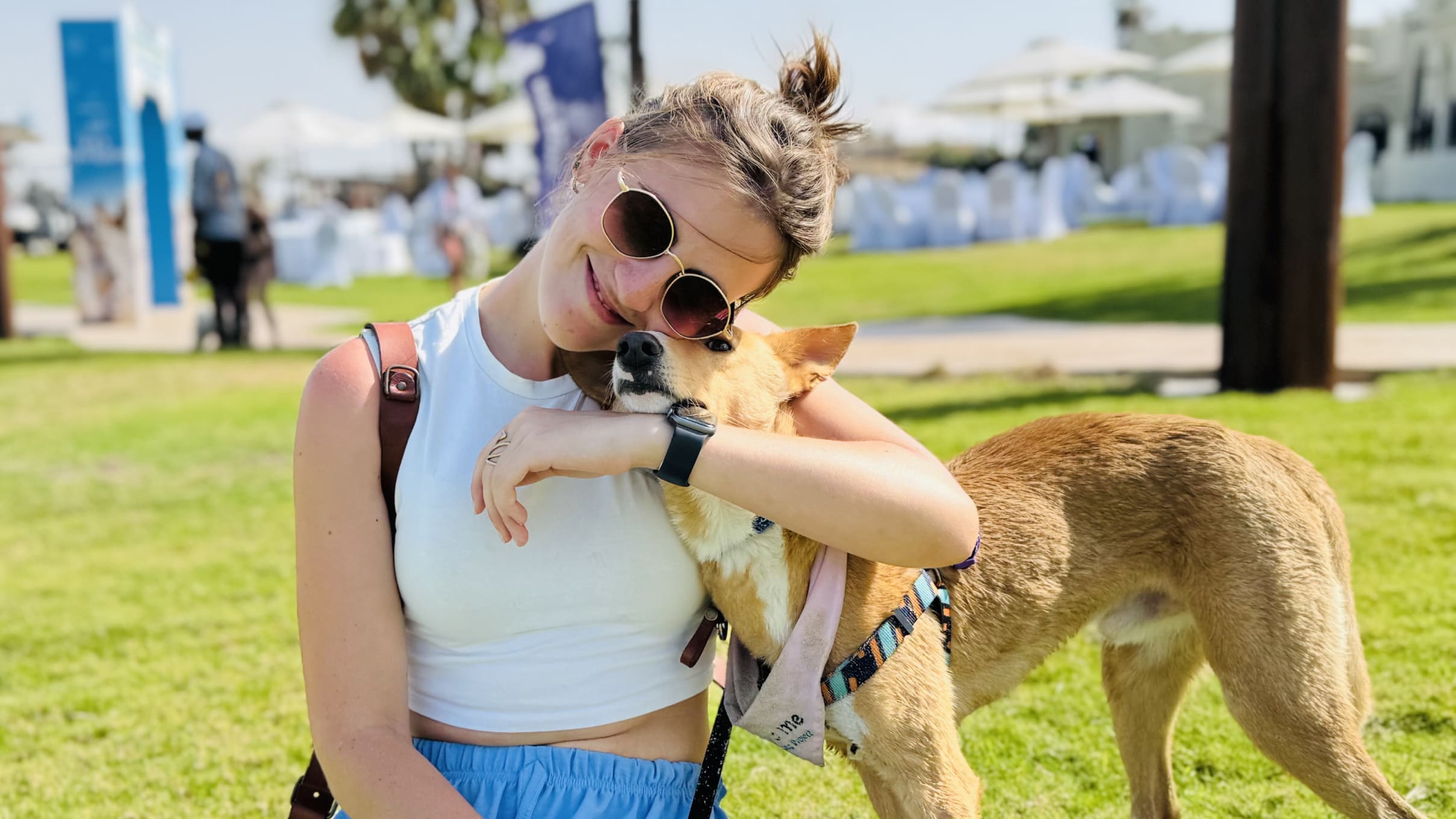Dogs that pace- an economical but inefficient way to walk

Dogs move by means of different gaits- the walk, amble, trot, canter, and gallop. However, some dogs move slightly differently; they pace. This does not mean they walk up and down the length of the room, in an anxious manner. Pacing rather, in the context of this blog, is referring to one of a dog’s gait patterns whereby the limbs on the same side move forwards at the same time i.e Left Front/Left Hind; followed by Right Front/Right Hind. This means at any time there are only 2 feet on the ground; this differs from a natural walk which is a 4-beat gait. Some animals do naturally walk in this manner, the most well-known being the camel, however giraffes, bears, and elephants also pace. It is rare for cats to pace. While this may sound like the dog is moving in unison, a pacing gait can look less graceful, clumsy, and bouncier.
Senior dogs, overweight dogs, puppies, certain breeds and tired dogs are all potentially more prone to this way of moving, but pacing becomes something we should really take note of when it is a pattern adopted because of arthritic and painful muscles and joints.
Senior, and overweight dogs may pace to attempt to create less strain on the back and hip joints. This is due to the decreased joint motion and mobilization that is required at the pace (when compared with the trot). Overweight dogs also tend to fatigue quicker hence attempting to conserve energy sooner.
Puppies may pace to cope with uneven growth but most often this is only temporary until they learn to trot. Interestingly, the trot is the one gait with which dogs seem to struggle the most in learning.
Some larger breeds, such as Labradors and Golden retrievers, are more prone to pacing. Conformation (how a dog is built) is also a factor, and dogs with a shorter back (relative to their legs) are also more likely to pace. Herding dogs, such as Old English Sheepdogs, natural pace. There are two notable problems: Firstly - all these aforementioned dog breeds, they are unable to respond quickly when a change of speed is required. This is because, to change speed, they first need to slow down to a walk (or speed up to a trot). Secondly – they cannot easily change direction. While pacing may be a natural gait for some, it can be further complicated by spinal arthritis or injury.
Additionally, pacing can be caused by fatigue, and in many cases may be the gait that dogs adopt at the end of the day, or after their exercise when they are tired. It is, for this reason, the pace can sometimes be referred to as a “fatigue”, or a “resting” gait. Despite this, the pace is actually considered quite inefficient due to the dog’s center of gravity being shifted continuously, from side to side; therefore, using more energy and effort to recentre themselves on each stride. Dogs that pace actually tend to have a slightly higher center of gravity.
While the pace is considered economical, it is not as stable as the trot, and therefore we should be conscious not to “train” this gait how can we avoid doing so? By not leash walking at the incorrect speeds. Walking too slow can hinder a comfortable trot for your dog; walking too fast can affect a comfortable walk as they rush to keep up.
A pace and an amble, although similar, are not one and the same (and should not be confused). An amble is a fast walk pace; it is a 4-beat gait. The pace is a 2-beat gait pattern; whereby two feet touch the ground at the same time. While the amble is a transitionary gait (between the walk and the trot), the pace is not necessarily.
Pacing can be normal but it is recommended you observe your dog closely, especially noting when they pace. Perhaps, it is seen more often in the cooler months when the arthritic joints ache more. Maybe you notice it after a long walk. This gait may be considered a way of compensating for pain, discomfort, or even a lack of strength. Pacing may be an early indicator of an orthopedic or neurologic issue, in the back or hindlimbs, in which case early diagnosis can mean potentially better outcomes. If you’re unsure, feel free to chat with your veterinary professionals - they will be able to assess how your pet moves (what we call a gait analysis). Should we be able to rule out any physical abnormality, then gait retraining can be attempted.


Schedule your appointment today
Book My Appointment







